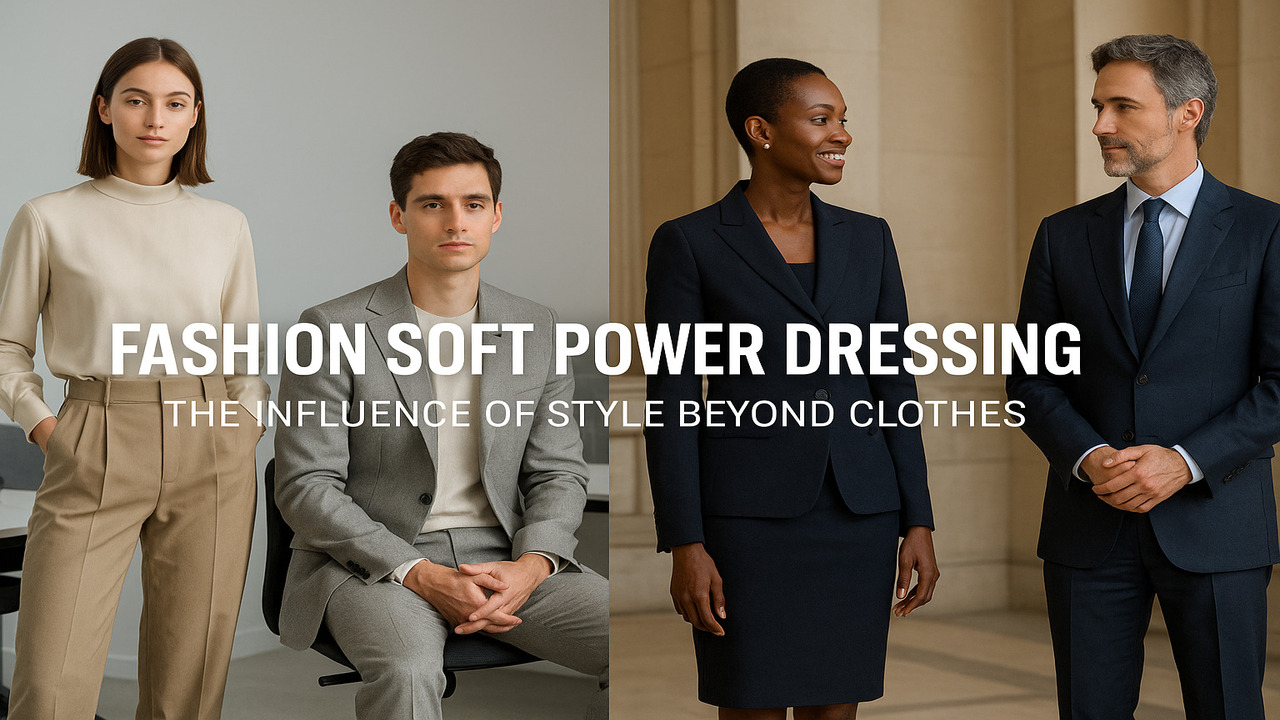
The Berkshire Mall – Fashion has always been a reflection of society, politics, and culture, but in recent years, the idea of soft power dressing has gained momentum. Unlike traditional “power dressing” of the 1980s, which emphasized sharp suits, broad shoulders, and an authoritative presence, soft power dressing relies on subtlety, elegance, and persuasion rather than dominance. It’s a form of dressing that communicates confidence and influence without appearing aggressive.
Soft power dressing draws inspiration from diplomacy and cultural influence, where charm, grace, and understated authority often achieve more than confrontation. In fashion, this translates into choices that signal thoughtfulness and awareness of context. Neutral tones, minimalist tailoring, and high-quality fabrics become tools for those who want to assert themselves with quiet sophistication rather than loud statements.
Clothing has long been a medium through which professionals communicate identity and credibility. In boardrooms, diplomatic events, or global conferences, attire often sends signals before words are spoken. Soft power dressing emphasizes harmony over intimidation, often choosing garments that are approachable but still sophisticated.
For women, this might include silk blouses, flowing trousers, or tailored dresses in calming tones. For men, softer cuts, layered textures, and classic colors can convey approachability while maintaining authority. The ultimate goal is to inspire trust and confidence without creating unnecessary barriers, proving that fashion can act as a tool of influence.
Also Read : Minimalist Aesthetics: Redefining Elegance in Modern Fashion
Several characteristics define the soft power dressing approach, separating it from traditional power dressing. Among the most notable are:
These principles make power dressing a versatile style that thrives in cross-cultural and global contexts, where understanding and adaptability matter.
Beyond corporate offices, soft power dressing plays an essential role in politics and diplomacy. Leaders, diplomats, and public figures often rely on wardrobe choices to convey respect, solidarity, or even resistance. A silk scarf with cultural motifs, a jacket made from traditional textiles, or the choice of sustainable fashion can carry symbolic weight during international events.
This approach acknowledges that fashion is not just about aesthetics but also about messaging. Subtle decisions in what one wears can soften tensions, create bridges, and project values without the need for direct words. It is an exercise in influencing perception through visual diplomacy.
The rise of soft power dressing is no coincidence it aligns with broader societal shifts. In an era where collaboration and empathy are increasingly valued, aggressive and rigid forms of power are giving way to approaches rooted in inclusivity and subtle influence. Fashion reflects this transition by embracing fluid silhouettes, gender-neutral designs, and sustainable fabrics that appeal to shared global values.
Additionally, the digital age has amplified the impact of appearances. Leaders and professionals are more visible than ever through media and online platforms. The ability to project authority without appearing unapproachable has become a valuable skill, and power dressing provides the perfect framework for this balance.
Read More : Virginia Beach Nightclub Reinvents the Scene with 30+
Instead of closing with a conclusion, it’s worth exploring how soft power dressing might evolve in the future workplace. With hybrid work environments, increased cultural exchange, and growing awareness of sustainability, fashion in professional settings will likely become even more adaptable. Comfort will blend with formality, while sustainable and ethically produced garments will define credibility as much as design.
This kind of power dressing may expand beyond its current forms to include more eco-conscious clothing lines, digital fashion for virtual spaces, and adaptive designs for greater inclusivity. As workplaces transform, so too will the definition of power dressing continuing to emphasize influence through subtlety rather than dominance.